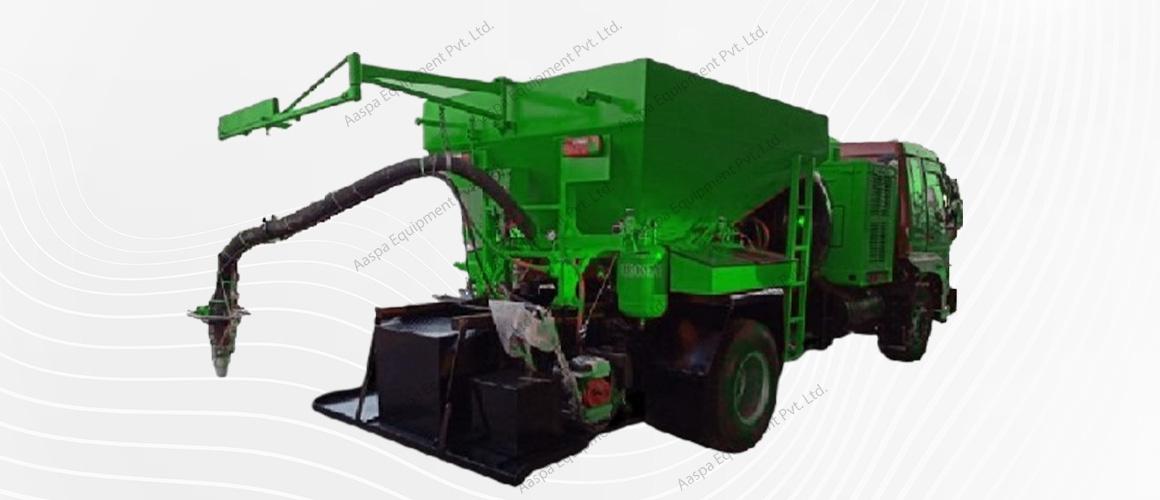Does Automatic Pothole Patcher Machines Fix the Pothole Problem in Busy Urban Areas?

Potholes are a significant issue in urban areas, where constant traffic, weather conditions, and the strain on roads lead to rapid deterioration. Cities across the world spend millions annually on road maintenance, yet the problem of potholes persists, causing damage to vehicles, disrupting traffic, and even leading to accidents.
This brings us to an important question: can automatic pothole patcher machines provide an effective solution to this ever-growing problem, especially in busy and crowded urban environments? – Let’s find out.
The Challenges of Pothole Repairs in Urban Areas
Before evaluating how well these machines work, it’s important to understand the unique challenges of repairing potholes in busy urban settings:
High Traffic Volume: Cities have heavy traffic, making it difficult to close roads for repairs. Traditional methods often require significant time and resources, causing major disruptions to daily commuters.
Limited Time Windows: Urban areas are constantly busy, which means that repair work needs to be done swiftly. Delaying repairs can cause road damage to worsen, but long road closures are equally undesirable.
Varying Road Conditions: Weather, construction, and inconsistent road quality across urban areas mean that repair solutions need to be adaptable to different situations.
Public Safety and Worker Risk: Working in such high-traffic environments increases the risk for road workers, making safety a top priority. Reducing human presence on-site is a key objective for municipalities.
Benefits of Automatic Pothole Patchers in Urban Environments
Automatic pothole patcher machines bring several technical benefits that make them particularly suited for urban road maintenance:
1. Real-Time Material Mixing and Application: Some of the most advanced automatic patchers are equipped with on-board mixing systems. This ensures the correct mix of aggregate and asphalt binder is prepared on demand, reducing waste and ensuring material consistency. In busy urban environments where quick repairs are essential, this eliminates the need for external asphalt delivery and ensures quality control over the repair materials.
2. Single-Operator Functionality: Most modern machines are designed to be operated by a single person, significantly reducing the need for large work crews. This is particularly important in urban areas where labor costs are high and deploying a large team might cause additional traffic management issues.
3. Seamless Traffic Management: The speed of operation is a key advantage of automatic pothole patcher machines. Their ability to complete a repair in as little as 10-15 minutes per pothole significantly reduces road closure times and minimizes the impact on traffic. Additionally, some patchers are designed to work within a single traffic lane without causing full road closures, which is particularly useful in narrow or heavily trafficked urban roads.
4. Year-Round Usability: In many regions, cold temperatures or wet conditions limit the effectiveness of traditional repair methods. Automatic pothole patcher machines equipped with insulated or heated hoppers can operate in colder climates or after rain, maintaining the optimal temperature for the asphalt mix. Additionally, cold-mix asphalt, which is often used in these machines, is designed for all-weather applications, making it suitable for year-round repairs in most climates.
5. Material Efficiency: These machines are engineered to minimize waste by applying only the necessary amount of material. Their automated distribution and compaction systems ensure that the material is applied evenly and consistently, reducing the likelihood of premature failure due to material inconsistencies. Advanced sensors in some machines even allow for real-time adjustment of the material flow based on pothole depth and width.
In a nutshell
Automatic pothole patcher machines are changing the game for urban road repairs, offering quick fixes with minimal disruption. But to keep roads in top shape for the long haul, they work best alongside a solid infrastructure plan.
Want to know how this solution can fit your urban road construction project needs? We’d love to chat! Reach out to us at info@aaspaequipment.com, and let’s explore the possibilities.
